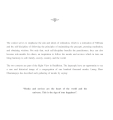self-conquest : ค้นหาหนังสือธรรมะ หน้า 2 / 22
หน้าหนังสือทั้งหมด

30
Family Life: Self-Control and Endurance
Part One: Family Life
day. Self-control can also be referred to as "loving to train our
self". In order to do this, we need a great mentor, or teacher.
The problem, of course, is how to find one. Not
Part One of this text discusses the significance of self-control and endurance in personal growth. It highlights the necessity of finding a wise mentor to guide us in our journey to self-improvement.

118
Truth for the Family: Dhamma Teachings
Part Five: Truth for the Family
about Dhamma and learned that there was a set of teachings
specifically tailored for householders. They include four
main virtues, which are:
1. Truthfulness (sacca): T
Part Five discusses essential virtues for householders taught in Dhamma, emphasizing truthfulness, self-improvement, and enduring hardships. Truthfulness (sacca) encourages honesty and accountability,

142
Acts of Self-Discipline: Understanding the Five Precepts
Part Five: Truth for the Family
Chapter 25
Acts of Self-Discipline
What are the five precepts and why are they
important?
"The rules to live by" that good people universally
adhere to are known in as
In Chapter 25, 'Acts of Self-Discipline,' the importance of the Five Precepts is discussed as essential guidelines for living ethically. Many young people today overlook these codes, viewing virtuous

132
The Significance of Ordination in Buddhism
The contest serves to emphasise the aim and ideals of ordination, which is a realisation of Nibbana
and the self-discipline of following the principles of maintaining the precepts, pursuing meditation
The contest emphasizes the ideals of ordination, signifying the pursuit of Nibbana and the self-discipline required to maintain precepts, meditate, and attain wisdom. Practitioners can inspire others

97
Guiding Children Towards a Positive Future
1. Teach your children. In a household where children have not developed bad behavior, then they should be taught about right and wrong and how to demonstrate self-discipline.
2. Address the problem
This content discusses the crucial role of parents in guiding their children to develop good behavior and self-discipline. It emphasizes the immediate need to address any self-destructive behaviors. F

57
Experiences at YUWA CAMP
YUWA CAMP was fun, happy and educative. All mentors were kind. I am sure the newcomers will have good time there just like I had. YUWA CAMP taught me to become a self-reliant, competent and good perso
YUWA CAMP is a joyful and educational experience that fosters self-reliance and good character in children. Mentors and participants share their positive experiences, friendships made, and the values

22
Understanding the Five Types of Mara
Suzanne Jeffrey
"The second type is called Kanta Mara and that is about the human body. Our present biology says that man is body, but in higher biology, man is composed of the human body and the min
In this excerpt, Suzanne Jeffrey elaborates on the concept of Mara, describing five distinct types: Kanta Mara (the body and mind functions), Gamma (action from karma), Deity (false gods), Matuman (fe

26
The Unknown Factor and the Balance of Creation
Suzanne Jeffrey
physical thinking that originally, God separated itself from itself in order to recognize
who it was. And, by the mere fact that in recognizing itself, it created a space in which to
เนื้อหานี้สำรวจแนวคิดเกี่ยวกับปัจจัยที่ไม่รู้จักซึ่งเป็น Dhamma และบทบาทของมันในความเป็นอยู่, ความสมดุล, และการสร้างสรรค์ ผ่านการสนทนากับหลวงพ่อและการอธิบายแผนภาพเกี่ยวกับการเข้าถึงความรู้และการปรับสม

128
Mappings with a Dharma Master
Mappings with a Dharma Master
we first start with our own individual self and then work outward in all directions.
“The six directions start with the smallest unit, ourselves. We are in the center o
The text discusses the importance of individual self-awareness and ethical behavior in shaping relationships and society. It emphasizes that one must start with self-improvement through meditation and

17
Understanding True Education and the Role of Kilesa
to refrain from involvement with bad company by keeping the company of true friends and fulfilling other's duty towards each other.
TRUE EDUCATION
Education is, in fact, to explore ourselves and find
การศึกษาที่แท้จริงคือการสำรวจตัวเองและเข้าใจข้อบกพร่องของเรา การศึกษาเพื่อแก้ไขการกระทำที่ไม่ดีและสร้างกรรมดีช่วยให้ลดทุกข์ในชีวิตได้ โดยมีการจัดการที่เหมาะสมเพื่อยกระดับศีลธรรมและความรับผิดชอบในสังคม

18
The Dangers of Self-Destructive Behaviors
self-destructive behavioural vices as drinking, nightlife, too much indulgence in sensual pleasure, gambling, associating with bad company, and laziness. These actions may not necessarily be considere
This text highlights various self-destructive behaviors such as excessive drinking, nightlife, and indulgence in pleasures that can lead to addiction and negative life outcomes. It warns against assoc

20
Formation of Habits
Formation of Habits
• The work which is done in each of the five rooms
• Attitude toward the consumption of the four necessities in these rooms
• The way to consume the four necessities in these rooms
The text discusses the formation of habits across five key areas of life, emphasizing proper training for cultivating good habits. It highlights attitudes towards necessities and living together, as w

120
Understanding True Divinity and the Inner Self
Because then we need to be aware of this standard before worrying about what true divinity is, how to promote that divinity, and where that divinity resides. How? Not anymore. We are more than enough.
The text emphasizes the importance of recognizing and understanding true divinity, which lies within one's inner self. It suggests that many misconceptions about divinity are rooted in ignorance. To g

120
An Shigao and Early Chinese Meditation Techniques
An Shigao and Early Chinese Meditation Techniques¹
Phra Kiattisak Kittipanyo² (University of Otago)
An Shigao安世高 (147~168 CE) played an important role in the early transmission of Buddhism into China
An Shigao (147-168 CE) significantly influenced the early transmission of Buddhism in China. Despite a focus on his ethnicity and translation style, he is recognized as a respected meditation master.

121
The Influence of An Shigao on Mindfulness Breathing Meditation in Eastern Han China
In this paper I explore the connections between An Shigao and the introduction of the Indian Buddhist meditation technique of mindfulness breathing meditation, or ānāpānasmṛti, into Eastern Han China.
This paper examines An Shigao's role in introducing the Indian mindfulness breathing meditation technique, ānāpānasmṛti, into Eastern Han China. The phrase「息中具有四大。 而心在中」suggests that the mind should f

126
An Shigao's Influence on Anban Sutras
From Sengyou’s CSZJJ, we learn that there are two Anban[shouyi] jing sutras which were translated by An Shigao:37
安般守意經一卷 安錄云:『小安般經』。(CSZJJ p.5c 23: “corresponding to a Smaller Anban jing”
大安般經一卷(CSZJ
This content examines An Shigao's translations of Anban sutras, highlighting the distinctions between the Present Da Anban shouyi jing and the Kongo-ji Anban shouyi jing. The text discusses the integr

139
Buddhist Texts and Historical Studies
The SAT Daizōkyō Text Database Committee. “出三藏記集 (No. 2145 (僧祐提)) in Vol. 55.” Taishō Shinshū Daizōkyō (大正新修大藏經), March 17, 1998. http://21dzk.l.u-tokyo.ac.jp/SAT/ddb-sat2.php?mode=detail&useid=2145,_
This collection includes significant Buddhist texts and studies, such as the Mahāyāna Buddhism foundations by Paul Williams and insights into early Chinese Buddhism by Erik Zürcher. Scholarly works di

578
บูดดิสมพุทธในวัฒนธรรมภาคอธิปไตย
บูดดิสมพุทธในวัฒนธรรมในภาคหรืภาคอธิปไตย
Buddhist College, Jinshan, New Taipei City, Taiwan.
Zürcher, E. 1990. "Han Buddhism and the Western Region." in A. F. P. Hulsewé, W. L. Idema and E. Zürcher, e
เนื้อหานี้พูดถึงการศึกษาและค้นคว้าบทบาทของพุทธศาสนาในวัฒนธรรมและการดำรงอยู่ของสังคมในภาคอธิปไตย โดยเฉพาะในจีน รวมถึงการแพร่กระจายและการปรับตัวของพระพุทธศาสนาในประวัติศาสตร์ พร้อมอ้างอิงจากผลงานวิจัยแล

156
A ‘New’ Early Chinese Buddhist Commentary
Zacchetti, Stefano. 2008 "A ‘New’ Early Chinese Buddhist Commentary: The Nature of the Da Anban Shouyi Jing (T 602) Reconsidered." Journal of the International Association of Buddhist Studies 31: 421-
This research article by Stefano Zacchetti delves into the nature of the Da Anban Shouyi Jing (T 602), reconsidering its significance in early Chinese Buddhist commentary. The study provides insights

157
หลักฐานทางวัฒนธรรมในคัมภีร์ทธิวุทธิโบราณ
หลักฐานทางวัฒนธรรมในคัมภีร์ทธิวุทธิโบราณ 1 ฉบับร่วมงานวิจัยโดยอ๋อ
เชิงอรรถท้ายบทที่ 3
1 เรียนเรียงจากงานวิจัยของพระเกียรติศักดิ์ กิตติญโญ (2557) "สมาธิศูนย์กลางทางในพระพุทธ ศาสนาจินตคณูตชั้นและยุคโฮ
เนื้อหานี้เน้นการศึกษาหลักฐานทางวัฒนธรรมที่พบในคัมภีร์ธิวุทธิโบราณ โดยเฉพาะการวิจัยและข้อมูลจากแหล่งอ้างอิงสำคัญต่างๆ ที่บ่งชี้ถึงความสัมพันธ์ระหว่างจีนและอินเดียในด้านพระพุทธศาสนา การเคลื่อนย้ายของผู
